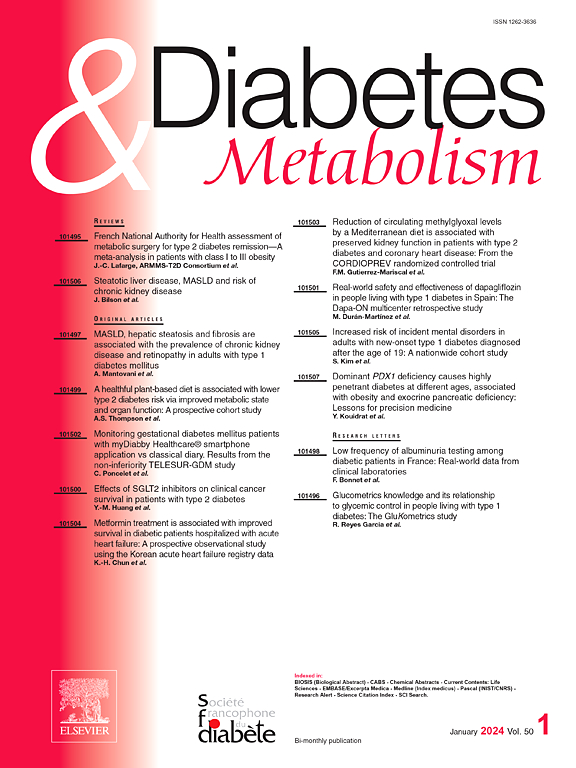Renoprotective mechanisms of glucagon-like peptide-1 receptor agonists
IF 4.7
2区 医学
Q1 ENDOCRINOLOGY & METABOLISM
引用次数: 0
Abstract
Glucagon-like peptide-1 (GLP-1) is an incretin hormone, secreted from gut endocrine cells, which acts to potentiate nutrient-induced insulin secretion. Activation of its receptor, GLP-1R, decreases glucagon secretion and gastric emptying, thereby decreasing blood glucose and body weight. It is largely through these mechanisms that Glucagon-like peptide-1 receptor agonists (GLP-1RAs) have transformed the treatment of type 2 diabetes. More recently, preclinical and clinical studies have reported that these agents have potent extra-pancreatic effects, exhibiting cardioprotective and renoprotective actions. The recent FLOW trial was the first multicentre clinical trial investigating the effect of GLP-1RAs on a primary renal outcome and reported robust evidence that GLP-1RAs are renoprotective. Studies in rodent models of renal injury have shown that gain and loss of GLP-1R signalling improves or deteriorates kidney function. However, the precise mechanisms responsible for renal benefits of GLP-1RAs are not yet fully understood. While prolonged activation of GLP-1 receptors (GLP-1R) has been shown to reverse diabetes-related disruptions in gene expression across various renal cell populations, GLP-1R expression in both rodent and human kidneys is thought to be primarily confined to certain vascular smooth muscle cells. This review discusses recent advances in our understanding of the effects of GLP-1 medicines on the kidney with a focus on indirect and direct mechanisms of action.
胰高血糖素样肽-1受体激动剂的肾保护机制
胰高血糖素样肽-1 (GLP-1)是一种肠促胰岛素激素,由肠道内分泌细胞分泌,其作用是增强营养诱导的胰岛素分泌。其受体GLP-1R的激活可减少胰高血糖素分泌和胃排空,从而降低血糖和体重。主要是通过这些机制,胰高血糖素样肽-1受体激动剂(GLP-1RAs)改变了2型糖尿病的治疗。最近,临床前和临床研究报道,这些药物具有强大的胰腺外作用,表现出心脏保护和肾保护作用。最近的FLOW试验是首个研究GLP-1RAs对原发性肾脏预后影响的多中心临床试验,并报告了强有力的证据表明GLP-1RAs具有肾保护作用。啮齿动物肾损伤模型的研究表明,GLP-1R信号的获得和丧失可改善或恶化肾功能。然而,GLP-1RAs对肾脏有益的确切机制尚不完全清楚。虽然GLP-1受体(GLP-1R)的长期激活已被证明可以逆转各种肾细胞群中与糖尿病相关的基因表达中断,但GLP-1R在啮齿动物和人类肾脏中的表达被认为主要局限于某些血管平滑肌细胞。这篇综述讨论了GLP-1药物对肾脏影响的最新进展,重点是间接和直接的作用机制。
本文章由计算机程序翻译,如有差异,请以英文原文为准。
求助全文
约1分钟内获得全文
求助全文
来源期刊

Diabetes & metabolism
医学-内分泌学与代谢
CiteScore
12.00
自引率
4.20%
发文量
86
审稿时长
13 days
期刊介绍:
A high quality scientific journal with an international readership
Official publication of the SFD, Diabetes & Metabolism, publishes high-quality papers by leading teams, forming a close link between hospital and research units. Diabetes & Metabolism is published in English language and is indexed in all major databases with its impact factor constantly progressing.
Diabetes & Metabolism contains original articles, short reports and comprehensive reviews.
 求助内容:
求助内容: 应助结果提醒方式:
应助结果提醒方式:


